See & Do
Star Gazing
“REMEMBER TO LOOK UP AT THE STARS AND NOT
DOWN AT YOUR FEET. TRY TO MAKE SENSE OF WHAT YOU
SEE AND WONDER ABOUT WHAT MAKES THE UNIVERSE EXIST.
BE CURIOUS, AND HOWEVER DIFFICULT LIFE MAY SEEM,
THERE IS ALWAYS SOMETHING YOU CAN DO AND SUCCEED AT.
IT MATTERS THAT YOU DON’T JUST GIVE UP.”
— PROFESSOR STEPHEN HAWKING (1942–2018)
Over 25 000 years ago, the Khoi San or Bushmen people who inhabited this region knew that time is in the stars. They had a remarkably extensive knowledge of the stars and wove this wisdom into the rhythm of their lives.
The 19th-century scholar Dr Wilhelm Bleek, who studied their languages and analysed their legends, found evidence that the Bushmen had observed the movements of the planet Jupiter and its four main moons with the naked eye. These Bushman legends date back to before Galileo made his observations with his first telescope.
Like the earliest people, we are still in awe by the mystery of the stars, planets and distant galaxies. Today, the extraordinary clarity of Sutherland’s cloudless, pollution-free night skies and its high elevation above sea level makes it a prime star-gazing destination and the perfect site for the South African Astronomical Observatory.
The observatory houses the largest single optical telescope in the Southern Hemisphere.
Based on the design of the Hobby-Eberly Telescope in Texas, it consists of a primary, hexagonal mirror 11 metres wide made up of 91 individual hexagonal mirrors, each one meter wide and weighing about 100kg.
This great eye probing the universe is sensitive enough to pick up the light of a single candle on the moon – but its main job is to scan deep space, witnessing the birth and death of planets, gazing into distant galaxies and recording the scale and age of the universe, stars, galaxies and quasars billions of light years away.
Sterland
Jurg and Rita Wagener developed an 8 ha smallholding called Sterland about 1 kilometer outside of town where they now have regular stargazing sessions almost every night in an open Muisbos enclosure.
They also do a monthly Stargazing cession called “Stars to Midnight”, the first weekend after New Moon with lectures about Astronomy. This event is on a Friday and Saturday.
Weekend Photographic workshops. Come and join the Cape Photographic Company and learn how to take "Star Trail" and "Milky Way" photographs on this fun and informative weekend workshop at Sterland.
Booking is essential in both cases as they can only allow a limited number of visitors.
Bookings can be done at:
https://sutherlandinfo.co.za/
Cell: +27 (0)82 556 9589
Email: [email protected]
Sutherland Planetarium
The Sutherland Planetarium was the brain child of of a local farmer and astronomer Nicol van der Merwe and his son, Nico. At the planetarium in town you can enjoy evening stargazing with a professional guide and at Blesfontein Guestfarm with Nicol.
At the planetarium in town you can enjoy evening stargazing and Smartphone Astrophotography sessions after every show.
The 30-seater Planetarium is open 7 days a week showcasing a wide range (54) of 3-D Fulldome films to ensure educational entertainment for the whole family.
And enjoy some great coffee while you are there.
Booking is essential in both cases.
Bookings can be done at:
http://www.sutherlandplanetarium.co.za/
Phone/ WhatsApp: +27 78 603 0058
Email: [email protected]
South African Astronomical Observatory -SAAO
The SAAO is a facility of the National Research Foundation, which operates under the South African Department of Science and Innovation.
The SAAO is comprised of headquarters in the Observatory in Cape Town, and a dedicated research and observation station with several working telescopes (including SALT) outside the Karoo town of Sutherland in the Northern Cape.
This is also where you will find the Southern African Large Telescope (SALT). They offer daily guided tours which include a visit to the visitor centre and a look at the inside of SALT telescope.
SALT is situated about 18 kilometers outside Sutherland on the Fraserburg road. Please note that they can only accommodate you if you have booked a visit – no unscheduled tours are permitted.
Only online bookings can be done.
To book please visit : https://www.saao.ac.za/visit-sutherland/
Snow
One of the reasons Sutherland is famous for.
Sutherland is seen as the coldest place in South Africa. Here midwinter temperatures can drop to -15°C (5°F). According to Sutherland locals, the first cold comes over Easter Weekend. The colder this weekend – the colder the winter.
Some years snow comes early, even at the end of May or beginning of June. The earlier it starts, the more often it tends to snow. But as a rule of thumb and again according to the locals who have been in Sutherland for generations – the month of August is seen as the snow month. This does not mean June and July has no snow, it just means that August is normally the month that gets the most snow. BUT, this is based on averages – and as all things in life, it is not a guarantee, but rather a calculated guess based on past years.
When it does snow – there are a few things to take into consideration.
If the snow is too wet, or if too much rain mixes with the snow (i.e. if it rains in between), then the snow won’t stick to the ground. So you may see snow falling – but have no proper photos of you making a snow angel to prove it.
When the snow does stick, it usually starts showing in the higher areas first. So the pass (Verlatenkloof) normally fills up with snow first, as well as higher lying farms like Gunsfontein Guest Farm, Blesfontein Guest Farm, Sterboom Guest Farm and Skurweberg Guest Farm. These farms are further out of Sutherland. Verlatenkloof Guest Farm is situated in the pass and of course also has a window to the first snows that usually fall in the pass.
When the snowfall is heavy, the pass may become unapproachable. As the wetness, water and ice rain lies on the tar and temperatures drop, the road may freeze and it becomes extremely slippery. So in many cases, you may have to turn around and wait at Matjiesfontein.
Snow only lasts a short while. Of course, how long it lasts would depend on the temperature and amount of snow that has stuck to the ground. But chances are good that if there is snow everywhere the morning, it may have all melted in the lower areas and on the tarred road by midday – with only drips and drabs in the shade.
Also remember to pack enough warm jackets, scarves and beanies!
Outdoors Family Activities
Horse riding and more at Blesfontein
Blesfontein Guest Farm offer guests the opportunity to feed the farm animals, experience farm life and best scenic views of the Roggeveld/Tankwa area.
During school holidays and long weekends there is a pop up coffee shop serving coffee and homemade cakes.
To support their Alpaca programme, they have opened a small alpaca shop where they have a selection of the warmest alpaca socks, scarves, beanies, ponchos, cardigans and insoles for sale. They also sell needle felted alpaca souvenirs and laser cut alpaca fridge magnets.
There are pony or horse rides for kids (adults welcome too!).
Bird-watching
The Succulent Karoo is one of two Southern African regions designated as biodiversity hotspots by Conservation International, making the Karoo an essential destination for birders. The Succulent Karoo biome known as the Tanqua Karoo, named after the river cutting through that region, is considered by experts to be among the finest for bird watching, especially in spring when the vegetation comes to life, with nest-building, raising chicks and displaying.
4x4 Routes , Hiking and Bike Trails
Blesfontein Guest Farm offers 4×4 trails, hiking and mountain bike trails (28km outside of town on the Bo-Visriver Road)
Skurweberg Guest Farm offers 4x4 trails, hiking and mountain bike trails (45 km from Sutherland)
Stofkraal offers 4×4 trails and hiking trails (35 km out of town.)
Middelfontein Walking Trails
Rita Wagener has put together a 3 to 15 km Walking Trail that doesn't just offer beautiful scenery, but also explains the geology and plants found on the Middelfontein farm. A selection of Karoo birds for the enthusiast bird watchers. No Bookings are required, however permission to enter the farm is required.
Please enquire at the Kambrokind Guesthouse and most importantly pick up a copy of the Brochure with names and explanations of all the numbered items along the walking trail. Free if staying at Kambro Kind or Middelfontein Farm. For quests from outside they charge R50 per person (no dogs allowed). There is also a historically walking trail in town that you can walk or even drive explaining the history of the buildings. They supply a booklet with all information.
The Silhouette Hiking Trail on the farm Ezeljaght
Silhouette Hiking Trail is a must for all the hiker enthusiasts , The Silhouette Trail is a two-day circular trail on the farm Ezeljaght, 22 km from Sutherland. It is family-friendly, with the first day 13km and the second 9km. It was laid out in 1996 by Prof. Leon Hugo, the developer of the Green Flag accreditation system for hiking trails, and winds between outcrops of dolomite rocks which give the trail its unique flavour.
Scenic day trips by car
There are some lovely gravel roads and mountain passes around Sutherland. Just before town on the R354 is a turn off to Ouberg Pass - this road will take you to a breath-taking view over the Tankwa Karoo. Height above sea level is 1404 meters. From there you can drive down the steep and winding Ouberg Pass to the Tankwa National Park. Continuing through the Tankwa you will reach the Gannaga Pass on your way to Middelpos and back to Sutherland again. Make sure you stop at the Gannaga Lodge and Die Riet Farm Stall for some refreshments.
Also on the R354 is a gravel road to Merweville – another Karoo gem worth the visit.
A 4x4 vehicle is recommended for these routes. Conditions can be very slippery after rain or snow – please check locally before you use these roads.
Fossil experience in and around Sutherland
Local palaeontologist, Jaco Groenewald, has an amazing fossil exhibition at Sterland Stargazing. Join him on a walk In the veld on a fossil hunt to an archaeological site.
Contact Jaco at 060 770 9567 to make an appointment.
Places of Interest
Architecture
Sutherland’s pioneers quarried the area’s distinctive grey stone for many of their buildings and architectural features, such as walls, gateposts and reservoirs. Building methods varied from dry packed stone to large dressed blocks, set in pointed mortar.
Together with the use of corrugated iron roofs, the stone walls give the town a textural, earthy appeal while the later addition of stoeps (verandas) in timber or steel adds a delicate touch to the otherwise sturdy houses.
Early photos of the town show that most buildings were gabled in the Cape Dutch fashion. As the Victorians swept in, gables and thatch or clay roofs went out of fashion, to be replaced by verandas and corrugated iron roofs. The remains of stone walls and other stone buildings are dotted around town, giving Sutherland its warm, rustic character.
A walking tour of the town will take you past most of the architecturally prominent buildings.
The Dutch Reformed Church
This is probably the most important of Sutherland’s heritage buildings, representing the reason for the town’s existence. The church was built in 1899. Designed by Charles Freeman (who also designed Cape Town’s Standard Bank building and the Graaff Reinet Dutch Reformed Church).
This is a cruciform straight gabled church built with pointed, rough stone. It has a square, two-tiered tower with a plastered spire topped by a bracketed cornice. The design is classical and restrained with round-headed openings.
The church houses a German-designed organ in its original casing, although the interior has been converted into an electrical instrument. During the Anglo Boer War the church was occupied by troops and used as a fort. Some damage was caused to the interior and graffiti from the occupation is still visible in the clock tower, tangible evidence of the town’s cultural heritage.
Graveyards
Sutherland’s graveyards are valuable for the history they represent, as well as for their unique gravestones, etched with handmade sandstone tools.
War graves from the Anglo Boer conflict are in the English graveyard. One of the curiosities here is a soldier named on two gravestones. He received a communal burial after drowning in a flash flood during the war. Later, the British government awarded him a military cross which was placed in the graveyard in his name.
A number of other war graves are scattered on farms around the district, including several unmarked graves dating from that time.
Forts and Blockhouses
The Anglo Boer War left a wake of forts and blockhouses. One such is Rebelskop, a hill topped by the ruins of a fort and named after a Boer division of 200 men that opposed the British forces. Under Commandant Abraham Louw, and reinforced by a further 50 men under the command of Albert Smith from Fraserburg, the rebels rained gunfire into the British-occupied town for 10 hours in a mini-siege.
Other ruins are still visible on the road to Salpeterkop and on the farm Gunsfontein. Here two blockhouses stand on opposite sides of a cliff, guarding a pass. Although most blockhouses are not open to the public they can be viewed from outside.
Museums, Memorials and Monuments
The main entrance to the town is marked by a memorial to the Voortrekkers, the colonists who explored South Africa’s interior to find new horizons in celebration of the 150th anniversary of the Groot Trek.
The town’s only museum, the Louw House houses artefacts belonging to the family Louw – a famous name in South African literature. The house was the birthplace of NP Van Wyk Louw and his brother WEG Louw.
Brief History of Sutherland
Sutherland is situated in the heart of the Roggeveld region. The name Roggeveld refers to the naturally occurring wild rye grass (Secale Africanum) in the area. Early scouts considered it to be promising for sheep farming, which is why pioneer farmers ventured into this terrain across immense distances and treacherous mountain ranges to settle in the area.
These scouts were met by the Khoi San people. They are the indigenous people who lived here for more 25 000 years.
After the arrival of the first white pioneer travellers and farmers in the 1700s and early 1800s, the Dutch East India Company advanced capital for the establishment of farms across vast tracts of land. These farms are today written into the region’s history with Dutch names like Uitkyk, De Guns Fonteyn, Klipfontein, De Knolle Fonteyn (Kanalfontein), De Jakkalsfontein, De List and Cylenberg.
Despite clashes with the resident Khoi San populations, the settlers remained.
The town was part of the Worcester district, whose religious well-being was overseen by one Dominee Henry Sutherland. In time, the Dutch Reformed Church bought De List farm as a church farm to serve the population of the Middle Roggeberg.
In 1855 a large stone building was built to serve as a local jail and the hospital was extended.
Two years later in 1857, the Worcester Municipal Council instructed that the farm De List be divided into 50 properties which could be sold to private individuals to form a church town. The town was to be named after Ds Henry Sutherland.
In 1858 the cornerstone of the first church was laid and in November of the same year the first properties were auctioned and the hamlet of Sutherland officially became a dot on the map of the world.
Community
Sutherland’s mother tongue is Afrikaans, but most people speak English as a second or third language. Where their English may lack in polish, it is amply compensated for in sincerity and warmth.
Generations of pioneering hardships in this remote place, far from outside assistance, taught Sutherlanders the value of a tight-knit community. They learned to pull together through the tough times and to celebrate the good ones.
Inspirational people from Sutherland
Maybe it’s the serenity. Or the remoteness. Or the stark beauty of the place. Whatever it is, the Karoo inspires writers and artists.
Two Sutherland families, the Von Moltke Louws and the Esterhuyses, produced three of South Africa’s best-known Afrikaans poets, DC Esterhuyse, NP van Wyk Louw and his brother WEG Louw.
Possibly Sutherland’s most recognised literary son is Nicolaas Petrus van Wyk Louw. He was born at Sutherland on 11 June 1906, the second of four boys, of whom the youngest, William Ewart Gladstone Louw, also became a poet.
Other successful people from here includes:
Dr Henry Olivier, chief engineer of the Kariba Dam project and contributing inventor of the Mulberry Harbours was born in Sutherland.
Adriaan Vlok, national government minister of Law and Order from 1986–1991 was born in Sutherland.
André van der Merwe, a famous South African urologist born in Sutherland.
What and where is the Karoo?
The first thing to understand is where and what exactly the Karoo is.
The Karoo is a huge semi-desert in the middle of South Africa. It’s made up of five regions: the Little Karoo, Tankwa Karoo, Moordenaars Karoo, Upper Karoo and Great Karoo. The boundaries are marked by subtle changes in the vegetation.
In the south, the Southern Cape Fold Mountain Belt divides the Karoo from the wetter coastal regions. To the west, the frontier is the Cederberg mountain range. To the east and north-east, the lines are drawn by the rolling grasslands of the Free State. And in the north, which is where you find Sutherland, the Karoo eventually gives way to Kokerboom (Quiver Tree) country.
The name Karoo derived from a Khoisan word and broadly translates as “hard, dry, thirsty”. The Karoo is best defined by its vegetation, which consists of assorted succulents and low scrub bushes. The area is devoid of surface water, but windmills supply locals with sweet, untainted underground water .
The Karoo holds a special place in the hearts of those who appreciate the beauty in its endless, sun-drenched spaces and flat-topped hills. Isolated farmsteads where hospitality to travellers is a deeply rooted way of life.
Vast, remote, open spaces, silence, serenity and dramatic landforms combine with an extreme climate and unique vegetation that make up the alchemy called Karoo bliss.
That’s what visitors fall in love with.
Cuisine
As you’ve realised by now, there’s much more to Sutherland and the Karoo than sheep.
But when dinner time rolls around, it’s those sheep you’ll be thinking of.
Enter the noble Merino sheep breed, which has long been the backbone of Karoo agriculture. Producing wool, crafty by-products and of course the truly, utterly, famously delectable Karoo mutton and lamb.
Rich traditional food culture is alive and thriving in Sutherland. Local cuisine is rooted in traditional boerekos. The food you will enjoy here is closely linked to the town’s agricultural setting. Due to Sutherland’s remoteness, fresh fruit and vegetables are limited. Many vegetables are preserved in some way, like curried green beans, or beetroot preserved in vinegar and sugar. An interesting local treat is preserved quince pieces (quinces are common in Sutherland) served with lamb or game.
Please have a look at our restaurant section for more information on restaurants, their menus and trading hours.
Fauna & Flora
Flora
Sutherland is the site of some fascinating and rare plant life. Not much rain falls in the district. When it does, the dry earth responds by erupting almost overnight into a multi-coloured carpet of wild flowers that stretches for kilometres in the nearby Hantam-Roggeveld.
The Star Tree, or Cliffortia arborea, is indigenous to Sutherland and is found only in the wonderfully named Unwieldy Mountains. Its needle-like leaves grow in a distinctive spiral shape around the stem, giving it its name.
The Romulea Eburnea flowering plant was recently discovered in the area, adding to the 27 known species of Southern African Romulea.
Other rare finds have been the purple-flowered Moraea and the Daubenya Aurea, a bulbous plant with yellow flowers.
The endangered Dioscorea Elephantipes or Elephant’s Foot, a succulent plant that lives without roots in the ground and grows extremely slowly, can be found in the area.
Plant enthusiasts can explore the Sutherland Tankwa Route, which forms part of the Succulent Karoo Ecosystem Plan (SKEP), and visit the 260ha Sterboom Natural Heritage site.
Fauna
Not only is Sutherland the only place in the world where you can spot five different species of tortoise, but it is also home to South Africa’s most endangered mammal, the humble riverine rabbit (Bunolagus Monticularis) or known in Afrikaans as Doekvoet. There are fewer than 1 500 of these little guys remaining and they can only be found in the Karoo.
Despite its arid environment, Sutherland enjoys abundant birdlife. The more glamorous members include Ludwig’s bustard (Neotis Ludwiggi), Sclater’s lark (Spizocorys sclateri), the black-chested snake-eagle (Circaetus Pectoralis) and the martial eagle (Polemaetus Bellicosus) as well as spurwing geese and flamboyant flamingos.
Many butterfly species flit in and around the area, some of them unique to this part of the world, with the he McGregor’s blue butterfly (Lepidochrysops Macgregori) being one of particular interest.
Dutch Reformed Church Tours
Please contact Darius for viewing times - 072 837 1234.
Louw Museum
Please contact Gerard to visit and for more information - 083 388 8209.

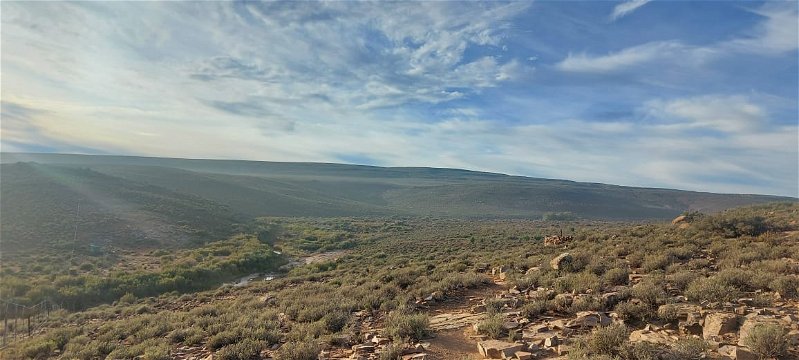
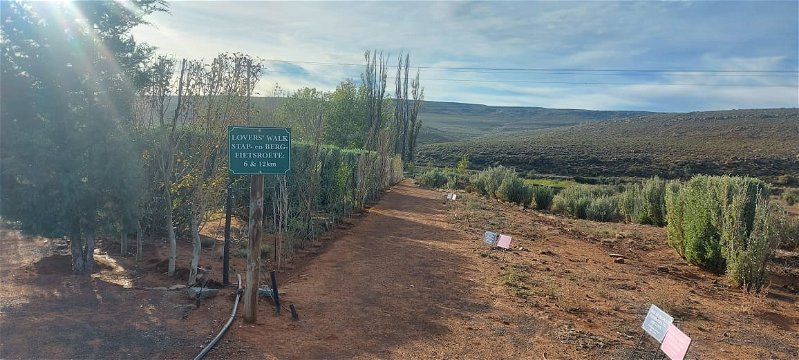
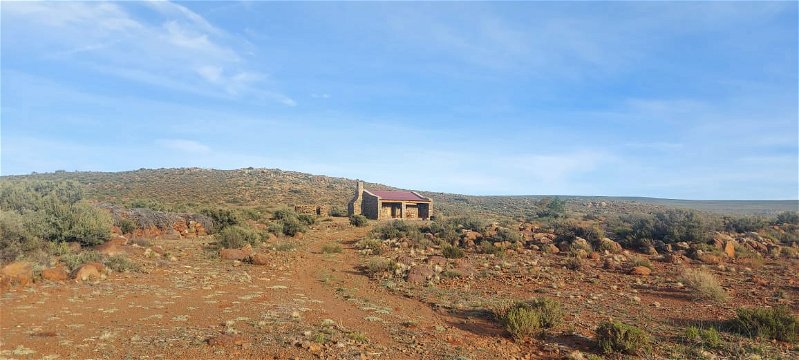
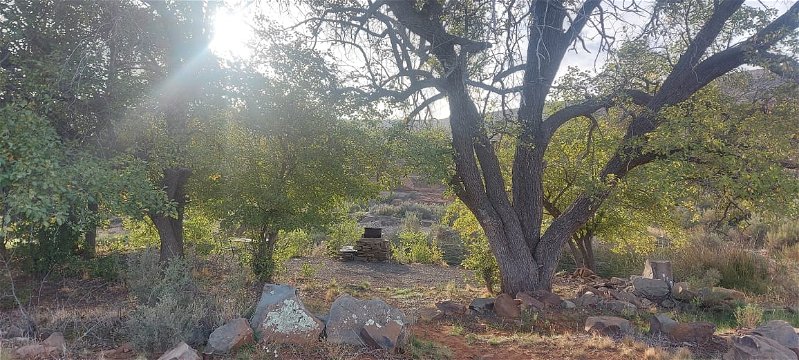
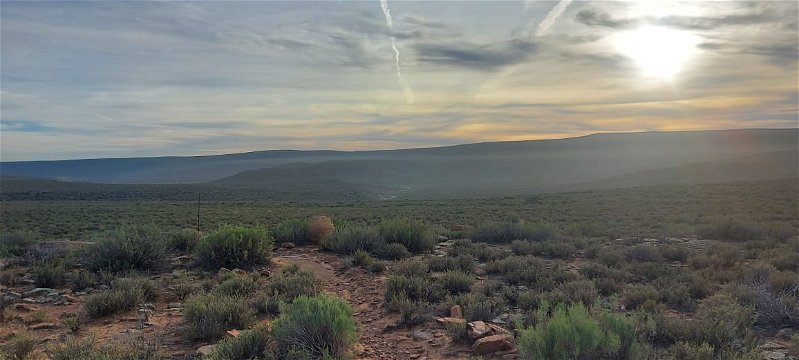
Share This Page